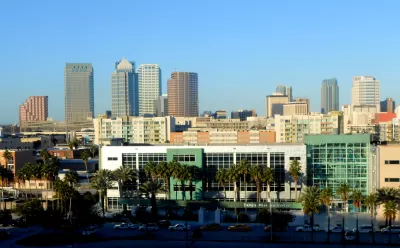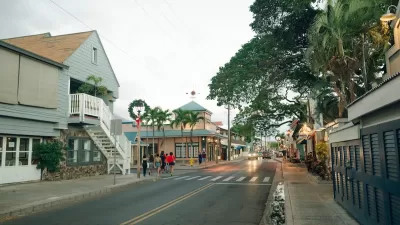The common perception of everyday America as a land of small towns and white faces doesn't reflect the current reality. Demographic analysis reveals "normal America" in cities like New Haven and Tampa.

According to analysis conducted by Jed Kolko, the idea many of us hold about "normal America" is outdated by over half a century. By the numbers, the American average is something like a mid-sized city on the East Coast.
On his methods, Kolko writes, "I calculated how demographically similar each U.S. metropolitan area is to the U.S. overall, based on age, educational attainment, and race and ethnicity [...] By this measure, the metropolitan area that looks most like the U.S. is New Haven, Connecticut, followed by Tampa, Florida, and Hartford, Connecticut."
The largest cities, like New York and Los Angeles, are outliers, but so are small towns. "Looking across metros of all sizes, the places that look most like America tend to be larger metros, though not the largest ones. The similarity index is highest, on average, for metros with between 1 million and 2 million people."
Running the numbers for America in the 1950s, the picture changes. "The large metros that today come closest to looking like 1950 America are Lancaster, Pennsylvania; Ogden and Provo, in Utah; and several in the Midwest and South [...] But the places that look today most like 1950 America are not large metros but rather smaller metros and rural areas."
FULL STORY: ‘Normal America’ Is Not A Small Town Of White People

Alabama: Trump Terminates Settlements for Black Communities Harmed By Raw Sewage
Trump deemed the landmark civil rights agreement “illegal DEI and environmental justice policy.”

Planetizen Federal Action Tracker
A weekly monitor of how Trump’s orders and actions are impacting planners and planning in America.

The 120 Year Old Tiny Home Villages That Sheltered San Francisco’s Earthquake Refugees
More than a century ago, San Francisco mobilized to house thousands of residents displaced by the 1906 earthquake. Could their strategy offer a model for the present?

In Both Crashes and Crime, Public Transportation is Far Safer than Driving
Contrary to popular assumptions, public transportation has far lower crash and crime rates than automobile travel. For safer communities, improve and encourage transit travel.

Report: Zoning Reforms Should Complement Nashville’s Ambitious Transit Plan
Without reform, restrictive zoning codes will limit the impact of the city’s planned transit expansion and could exclude some of the residents who depend on transit the most.

Judge Orders Release of Frozen IRA, IIJA Funding
The decision is a victory for environmental groups who charged that freezing funds for critical infrastructure and disaster response programs caused “real and irreparable harm” to communities.
Urban Design for Planners 1: Software Tools
This six-course series explores essential urban design concepts using open source software and equips planners with the tools they need to participate fully in the urban design process.
Planning for Universal Design
Learn the tools for implementing Universal Design in planning regulations.
Clanton & Associates, Inc.
Jessamine County Fiscal Court
Institute for Housing and Urban Development Studies (IHS)
City of Grandview
Harvard GSD Executive Education
Toledo-Lucas County Plan Commissions
Salt Lake City
NYU Wagner Graduate School of Public Service





























